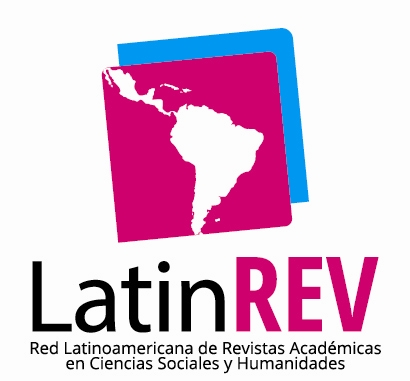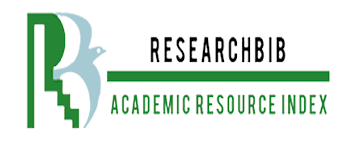Agrosocioeconomic analysis after the implementation of the Comprehensive Sustainable Agricultural, Environmental, and Social Development Project [PIDAASSE], San Vicente, Santa Elena, Ecuador
DOI:
https://doi.org/10.35622/j.rr.2023.012.004Keywords:
agriculture, characterization, rural development,, PIDAASSE, irrigationAbstract
The objective of this work was to characterize the socio-economics of agricultural producers of the Cordillera Chongón Colonche Association after the implementation of the PIDAASSE project. The investigation was based on a mixed approach whose primary source of information was made up of the 28 producers of the Association. To collect the information, the survey was used whose components were: social, economic, agricultural and environmental. In the social aspect, they only have electricity and potable water, most have only basic education, they do not have public transportation or health services; In agricultural aspects, of the 120 hain production, only 34 hectares have irrigation, of which PIDAASSE only supported them with drip irrigation systems for 12 hectares, so the low technological development within the productive units is evident. and poor use of water. In economic aspects, income in rural areas is limited to agricultural production, where 14% of producers choose to rent the land for minimal values; in the environmental aspect, after the implementation of the PIDASSE, they indicate that at present the native species that inhabited the area are no longer frequently observed. The current situation of the productive units, regarding the use of their potentialities visualized in the characterization, raises the importance of promoting sustainability approaches, based on an adequatearticulation of economic, social, environmental and cultural aspects, this perspective must be translated into the definition of criteria for participatory planning in the medium term, with direct actions aimed at the consolidation of sustainable rural development, the use of resources, and the active participation of social actors in determining their future.
References
Amaro-Rosales, M., & de Gortari-Rabiela, R. (2016). Innovación inclusiva en el sector agrícola mexicano: Los productores de café en Veracruz. Economía Informa, 400, 86-104. https://doi.org/10.1016/j.ecin.2016.09.006
Amaro-Rosales, M., & Gortari-Rabiela, R. de. (2016). Políticas de transferencia tecnológica e innovación en el sector agrícola mexicano. Agricultura, sociedad y desarrollo, 13(3), 449-471. http://www.sciencedirect.com/science/article/pii/S0185084916300342
Andrade, P. R. V., & Ortiz, C. T. (2020). Agua en territorios comunales: Gestión del riego en el valle del río Javita, provincia de Santa Elena. Siembra, 7(1), 001-016. http://portal.amelica.org/ameli/jatsRepo/246/2461061003/html/index.html
Bermudez, L. T., C, L. F. R., & Paez, A. F. (2010). Impactos socioeconómicos y ambientales del Proyecto de Riego y Drenaje del Valle del Alto Chicamocha y Firavitoba, Boyacá (Colombia). Agronomía Colombiana, 28(2), 337-344.
Castillo, J. F. C. D. del. (2013). La intermediación como un impedimento al desarrollo del pequeño productor de Medellín. Corpoica Ciencia y Tecnología Agropecuaria, 14(1), 27-32. https://doi.org/10.21930/rcta.vol14_num1_art:264
Fundora, Z. M., Castiñeiras, L., Shagarodsky, T., Barrios, O., Fernández, L., León, N., Moreno, V., Cristóbal, R., de Armas, D., García, M., Hernández, F., Arzola, D., García, R., Giraudy, C., & Fuentes, V. (2010). Destinos de la producción de diferentes cultivos en fincas rurales de dos provincias de Cuba. Cultivos Tropicales, 31(3), 00-00. http://scielo.sld.cu/scielo.php?script=sci_abstract&pid=S0258-59362010000300011&lng=es&nrm=iso&tlng=es
Garro Mena, L., Calderón Castro, J. A., Láscarez Smith, D., Garro Mena, L., Calderón Castro, J. A., & Láscarez Smith, D. (2019). Intersubjectivity as an epistemic basis of technical-scientific disciplines. Revista Reflexiones, 98(1), 61-74. https://doi.org/10.15517/rr.v98i1.33060
Guelmes Valdés, E. L., & Nieto Almeida, L. E. (2015). Algunas reflexiones sobre el enfoque mixto de la investigación pedagógica en el contexto cubano. Revista Universidad y Sociedad, 7(1), 23-29. http://scielo.sld.cu/scielo.php?script=sci_abstract&pid=S2218-36202015000100004&lng=es&nrm=iso&tlng=es
El Universo. (2015, julio 13). El trabajador agrícola ecuatoriano recibirá $ 21,41 por día. El Universo. https://www.eluniverso.com/noticias/2015/07/13/nota/5016517/trabajador-agricola-recibira-2141-dia
Lastra, S. P., Durán, N. C., & Acosta, D. (2018). Community based pedagogy as an eye-opening for pre-service teachers’ initial connections with the school curriculum. Colombian Applied Linguistics Journal, 20(2), 209-229. https://doi.org/10.14483/22487085.13047
MAG. (2015). Proyecto PIDAASSE beneficia a 615 familias de comunas de Santa Elena y Guayas – Ministerio de Agricultura y Ganadería. https://www.agricultura.gob.ec/proyecto-pidaasse-beneficia-a-615-familias-de-comunas-de-santa-elena-y-guayas/
Ocampo, D. S. (2019, junio 4). El enfoque mixto de investigación: Algunas características. Investigalia. https://investigaliacr.com/investigacion/el-enfoque-mixto-de-investigacion/
Ortega, C. (2021, abril 14). Investigación mixta. Qué es y tipos que existen. QuestionPro. https://www.questionpro.com/blog/es/investigacion-mixta/
Sales, R. G., Guida-Johnson, B., Sales, R. G., & Guida-Johnson, B. (2018). Percepción ambiental y producción de alimentos para autoconsumo. Revista de geografía Norte Grande, 71, 109-124. https://doi.org/10.4067/S0718-34022018000300109
Salgado, O., Dolores, M., Ojeda Bustamante, W., Bahena Delgado, G., & Alpuche Garcés, O. (2014). Participación y apropiación de la modernización y tecnificación del riego en Chihuahua México. Ingeniería Hidráulica y Ambiental, 35(1), 47-61. http://scielo.sld.cu/scielo.php?script=sci_abstract&pid=S1680-03382014000100004&lng=es&nrm=iso&tlng=es
Santos, L. F. dos, Ferreira, M. A. M., Campos, A. P. T. de, Santos, L. F. dos, Ferreira, M. A. M., & Campos, A. P. T. de. (2018). Rural development and family agriculture in the Brazilian state of Minas Gerais in the light of multivariate data analysis. Interações (Campo Grande), 19(4), 827-843. https://doi.org/10.20435/inter.v19i4.1817
Shorthand, teleSUR. (2015, octubre 8). Las mujeres campesinas en América Latina. Shorthand. https://social.shorthand.com/teleSURtv/ngQHBStBfc/las-mujeres-campesinas-en-america-latina
Spielman, D. J., Ekboir, J., & Davis, K. (2009). The art and science of innovation systems inquiry: Applications to Sub-Saharan African agriculture. Technology in Society, 31(4), 399-405. https://doi.org/10.1016/j.techsoc.2009.10.004
Villanueva, M. C., & Esquivel, R. P. (2012). Impactos antropogénicos en la calidad del agua del río Cunas. Apuntes de Ciencia & Sociedad, 2(2). https://doi.org/10.18259/acs.2012015
Published
Issue
Section
License
Copyright (c) 2023 Ferdinand Rubén Cruz-Méndez, Verónica Cruz-Méndez

This work is licensed under a Creative Commons Attribution 4.0 International License.




















